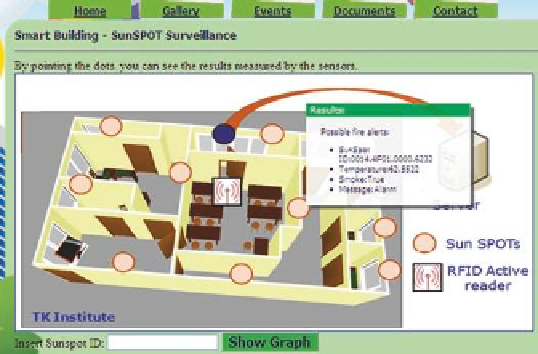Information Technology Reference
In-Depth Information
used independently from the other scenarios. Each GUI briefly elaborates the usage
scenario it refers to and presents the system architecture with the relevant real-time
sensors' results. Additionally, some scenarios have the possibility to acquire statistics
of the sensors' values variations over time. The RFID parts of the usage scenarios are
developed as stand-alone applications and are included in the GUI with a short intro-
duction. The separate usage scenarios are shortly elaborated in
Section 11.3
.
11.3
Testbed Realization
Each usage scenario is developed using specific parts of the testbed infrastructure.
All scenarios can function as stand-alone applications, while at the same time they
are integrated in the joint platform through the common GUI and the database. The
features of the developed usage scenarios are shortly elaborated in this section.
11.3.1
Smart Institute
The
Smart Institute
scenario presents how the WSN, integrated with the emerging tech-
nology of RFID, is used to create a smart environment at the FEEIT's faculty premises.
It comprises two separate demo applications, i.e.,
Protected Institute
, which serves as
an effective system for emergency situations' prevention (mainly protection of indoor
fires) and
Presence Identification
, which is a stand-alone application for maintaining
attendance records and informing the students about the professors' presence in the
institute. The first sub scenario employs Sun SPOT WSN modules equipped with tem-
perature [
8
] and smoke analog sensors [
9
], which are placed in the faculty premises as
presented in Fig.
11.3
. The second sub scenario is developed with active and passive
Fig. 11.3
FEEIT's premises with WSN and RFID reader location

Search WWH ::

Custom Search